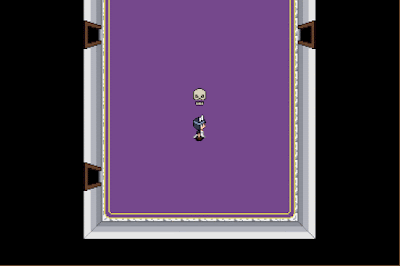Gamedev Updates 4
2 weeks ago I became interested in making a roguelike again for some reason, Since I don't really like ascii graphics that much I spent some time looking for tutorials that involved graphical tiles.
I didn't manage find a tutorial specifically for making a graphical roguelike, but I did find this post that meant I could easily convert an ascii to tiles after creating a game with the libtcod library. I remembered that there was a tutorial that used Python + libtcod so I decided to try that out.
Over the course of a week I followed the tutorial and learned about all the shortcuts and features that libtcod provides. At the end of the tutorial a I had a roguelike with a lot of standard features such as spell casting, dungeon generation, equipments and even a field of view system.
Unfortunately the tutorial wasn't as complete as I had hoped but it still gave me a good starting point.
So I tried to add new features and realised that I don't actually know enough about Python to add new features to the game and trying to add features was very messy because the tutorial never split the code up into different files.
I commented out the rolling mechanic I was working on and instead work on sorting out the structure of the game, then I ran into problems with circular imports and Python having issues with the scope of variables.
Now I'm working on tutorials that go over the basics of Python so I can get the game working again. I have actually used Python before but I didn't think I had forgotten so much about it.
Grapple Punch is on hold due to this project, I was hoping to get this roguelike to a stage where I could work on it as a side project where I just add content gradually, get feedback and then implement new features and tweak it based on feedback, but since the game doesn't work at the moment I can't really do that.
The Python + libtcod tutorial is very useful for getting a roguelike up and running but you really need to know some Python if you want to take it any further.
I didn't manage find a tutorial specifically for making a graphical roguelike, but I did find this post that meant I could easily convert an ascii to tiles after creating a game with the libtcod library. I remembered that there was a tutorial that used Python + libtcod so I decided to try that out.
Over the course of a week I followed the tutorial and learned about all the shortcuts and features that libtcod provides. At the end of the tutorial a I had a roguelike with a lot of standard features such as spell casting, dungeon generation, equipments and even a field of view system.
Unfortunately the tutorial wasn't as complete as I had hoped but it still gave me a good starting point.
So I tried to add new features and realised that I don't actually know enough about Python to add new features to the game and trying to add features was very messy because the tutorial never split the code up into different files.
I commented out the rolling mechanic I was working on and instead work on sorting out the structure of the game, then I ran into problems with circular imports and Python having issues with the scope of variables.
Now I'm working on tutorials that go over the basics of Python so I can get the game working again. I have actually used Python before but I didn't think I had forgotten so much about it.
Grapple Punch is on hold due to this project, I was hoping to get this roguelike to a stage where I could work on it as a side project where I just add content gradually, get feedback and then implement new features and tweak it based on feedback, but since the game doesn't work at the moment I can't really do that.
The Python + libtcod tutorial is very useful for getting a roguelike up and running but you really need to know some Python if you want to take it any further.

Comments
Post a Comment